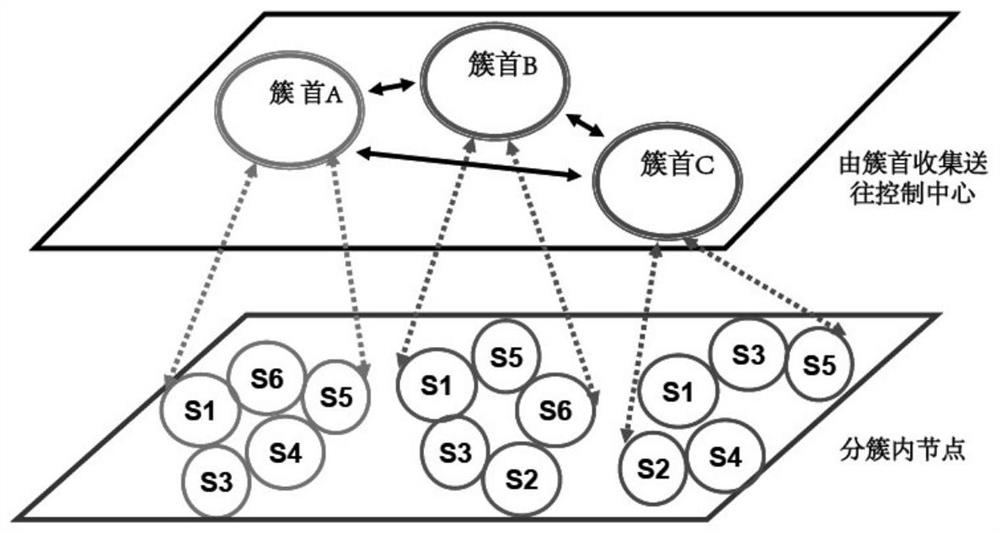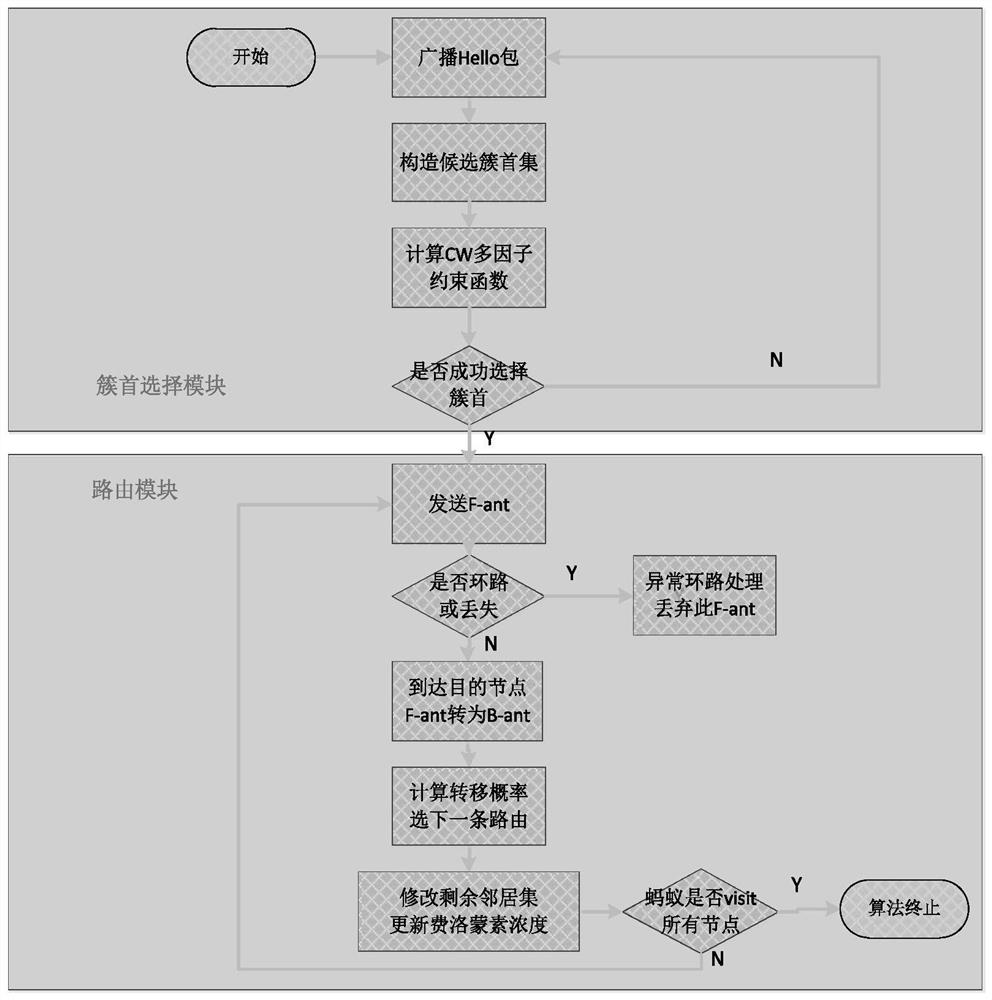Mobile sensor network routing optimization method based on contention window ant colony clustering
A technology of competition window and optimization method, applied in the field of mobile sensor network routing optimization, can solve the problems of low forwarding success rate of routing data packets, inability to cope with special conditions, short node lifetime, etc., to reduce the amount of flooded data, The effect of optimizing the transition probability calculation mechanism and prolonging the survival period
- Summary
- Abstract
- Description
- Claims
- Application Information
AI Technical Summary
Problems solved by technology
Method used
Image
Examples
Embodiment 1
[0048]A routing optimization method for mobile sensor networks based on competitive window ant colony clustering, such as figure 2 shown, including the following steps:
[0049] Step 1: Divide the nodes with non-uniform load into cluster head nodes and intra-cluster nodes, and calculate the competition window value according to the network depth of the nodes in the cluster.
[0050] According to the node load distribution in the network topology, for the network depth h i node i and network depth h j node j, if h j i hour, The calculation method of the initial value of the contention window of the cluster head node of the present invention is shown in formula 1:
[0051]
[0052] The h-th layer node i in the cluster, the initial value of its competition window The calculation formula of is shown in formula 2:
[0053]
[0054] Step 2: After the initialization of the candidate cluster head set, place N ants on the cluster head, and each ant is the same. The aver...
Embodiment 2
[0066] The present invention adopts the OMNeT 4.0 simulation platform, and mainly investigates the performance of the protocol under different network scales. Experiment 1: Data packet transmission success rate; Experiment 2: Node survival time. Experimental scale: 48 sensors. The nodes are divided into 14 groups, starting with 20 nodes, and then adding 2 nodes for each group of experiments. The single-node cache is 600M (the total amount of data packets during the simulation is less than the cache, and no overflow occurs), the node communication radius is 100m, the unicast communication method is adopted, and the transmission speed is 200kb / s. The node adopts the RandomWaypoint motion model, and the speed range is In addition, the OMNet analog data generator per Randomly generate a packet with a size of data packets. Take the weight factor k 1 =0.45,k 2 =0.22,k 3 = 0.33. The detailed simulation experiment parameter settings are shown in Table 1:
[0067] Table 1 ...
PUM
 Login to View More
Login to View More Abstract
Description
Claims
Application Information
 Login to View More
Login to View More - Generate Ideas
- Intellectual Property
- Life Sciences
- Materials
- Tech Scout
- Unparalleled Data Quality
- Higher Quality Content
- 60% Fewer Hallucinations
Browse by: Latest US Patents, China's latest patents, Technical Efficacy Thesaurus, Application Domain, Technology Topic, Popular Technical Reports.
© 2025 PatSnap. All rights reserved.Legal|Privacy policy|Modern Slavery Act Transparency Statement|Sitemap|About US| Contact US: help@patsnap.com



